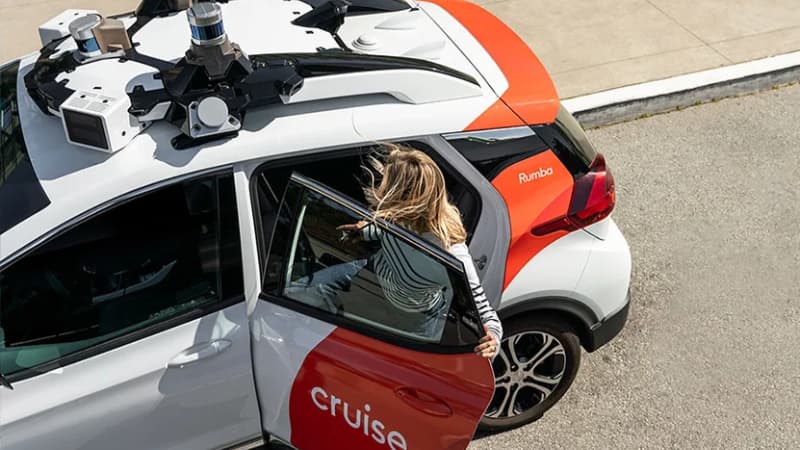Was the night too boozy for Cruise’s robot taxis? At the end of last week we learned that this General Motors service, as well as Waymo, the one offered by Google, could now extend their activity to San Francisco after a favorable decision by local authorities.
The mobile network in question
However, around 11:00 p.m., from Friday to Saturday night, just a few hours after this authorization from the authorities, Cruise’s robot taxis – with no one on board therefore – experienced a rather strange bug. A dozen of them came to rest in fairly narrow streets in the North Beach district. Enough to cause major traffic jams, as can be seen in the videos shared on social networks.
In response to the previous post, Cruise mentioned a mobile network bandwidth issue, with congestion caused by a music festival putting a strain on in-vehicle connectivity.
A disturbing bug?
“We are actively investigating and working on solutions to prevent this from happening again. We apologize to those affected,” Cruise’s message concludes.
This event generated numerous complaints from neighbors and passers-by who witnessed the scene. An unprecedented incident that could call into question the extension of robot-taxi services granted the day before this malfunction?
Without seriousness and resolved rather quickly, this event raises a number of questions according to a local elected official from this San Francisco district interviewed by NBC.
“In addition to being inconvenient, it is dangerous, reacted Aaron Peskin. What would happen if an emergency vehicle got stuck or a natural disaster brought the mobile network to a standstill?
For him, the technology must be improved before it can spread further. He thus asks to suspend the extension of service granted by the Californian authorities.
“Something has to be done about it before someone dies,” warns Aaron Peskin.
Accidents so far without seriousness
Several accidents have occurred since the first launches of robotic taxis in California. Recently, opponents of these driverless cars found a trick to block these vehicles, placing a cone of simple construction on the hood. They were protesting precisely against the expansion of the activity of Waymo and Cruise, a few weeks before the decision of the authorities.
The local authority, the California Department of Motor Vehicles (DVM) lists 280 accidents in the past 5 years, with a total of 64 injuries and a dog death, without being able to distinguish the cases where the autonomous vehicle was actually at fault. explained last week an NBC journalist.
Before the vote by the Californian authorities, the latter conducted a test drive of one of Cruise’s vehicles with a driving instructor who had never used the service, all reported in his account X (the new name of Twitter). And she didn’t go as planned…
Indeed, the vehicle was immobilized for no reason at a green light, appearing to hesitate to leave for a certain time. Finally, the latter resumed the race, but only stopped after a few meters, almost blocking two lanes of traffic.
“He is much worse than the worst student I had in driving,” the instructor then reacted.
According to Cruise, the work area is the source of the problem. 20 minutes later and after a few horns and a fairly dense traffic jam caused by the immobilized vehicle, a Cruise employee was finally sent to the scene and took the wheel to end the race.
A symptomatic problem of these “little bugs” without seriousness, but which show the difficulty of these vehicles to face all the situations that can be found on the road. Last year, autonomous vehicle services in California had to take manual control of a robot-taxi more than 8,000 times.
Source: BFM TV


